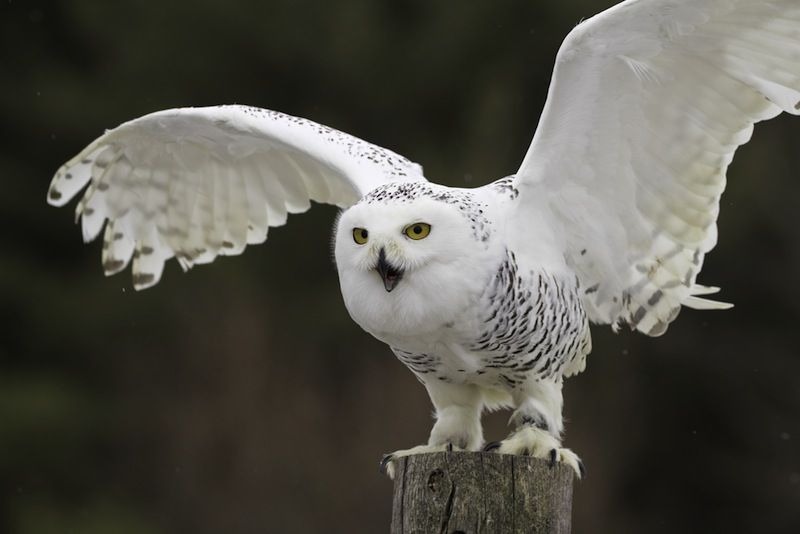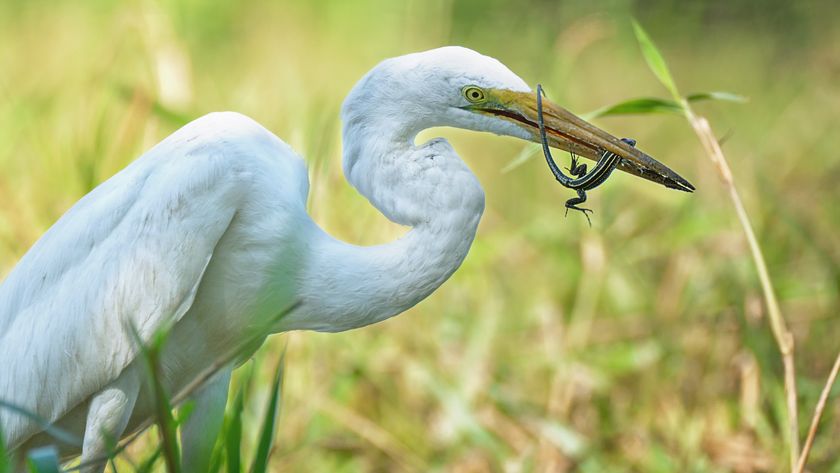Grab Your Binoculars! Audubon's Christmas Bird Count Begins This Weekend

This winter, tens of thousands of birdwatchers across North America will bundle up and brave the elements, all in the name of science.
The National Audubon Society's 114th annual Christmas Bird Count begins Saturday (Dec. 14). Volunteer citizen scientists in all 50 U.S. states, all Canadian provinces, and parts of Mexico, Latin America, the Caribbean and the Pacific Islands are set to take part in the yearly tradition, armed with bird guides, binoculars and checklists.
The annual count is the longest-running census of bird populations, and is used to help scientists assess the health of different species, said Geoff LeBaron, director of the Christmas Bird Count (CBC).
"We try to look at the trend data to understand what's going on in the big picture," LeBaron told LiveScience. "Are species increasing, declining, or shifting their ranges? These are some of the larger-scale analyses we do with CBC data." [Quest for Survival: Incredible Animal Migrations]
Participation in the count, which runs from Dec. 14 through Jan. 5, 2014, has been steadily growing, he added.
"In our first Count, in 1900, there were 25 counts and 27 people involved," LeBaron said. "Last year, there were 2,369 different Christmas Bird Counts, and we had over 71,000 observers."
This season, birdwatchers may be treated to sightings of snowy owls for the third year in a row, Audubon officials said. These large, majestic birds — popularized in the Harry Potter novels and films as Harry's pet owl, Hedwig — have already been spotted as far south as North Carolina and the island of Bermuda.
Sign up for the Live Science daily newsletter now
Get the world’s most fascinating discoveries delivered straight to your inbox.
"We're seeing record movement of snowy owls in the Northeast so far," LeBaron said. "For three years in a row, we've seen this southward movement of snowy owls, and in places where it's rare to see these birds. It's going to be really interesting how this plays out."
Snowy owls are an irruptive species, which means their population growth is characterized by unpredictable booms and subsequent crashes. When food is scarce up north, these Arctic predators fly south in search of sustenance. But, scientists are scratching their heads over the recent spike in sightings.
"It's not unusual that there's a flight of snowy owls — it's part of their biology, and it's something that happens every three to five years," LeBaron explained. "What's unusual about this is that it's happening three years in a row."
Weeks before the start of the Christmas Bird Count, snowy owls had already been reported in New Jersey, Pennsylvania, Massachusetts, Virginia and New York.
This year, LeBaron plans to take part in two counts: one in Rhode Island and one in Massachusetts. He encourages people of all skill levels to participate in local counts, including beginners with no previous birdwatching experience.
"It's a great way for new birders to learn more about it," he said. "It's also great for kids, and we've seen a lot of kids turn into the fabulous birders very quickly by participating in the counts. Plus, there's always an element of beginner's luck."
More information about the three-week event can be found on the Audubon's Christmas Bird Count website.
Follow Denise Chow on Twitter @denisechow. Follow LiveScience @livescience, Facebook & Google+. Original article on LiveScience.

Denise Chow was the assistant managing editor at Live Science before moving to NBC News as a science reporter, where she focuses on general science and climate change. Before joining the Live Science team in 2013, she spent two years as a staff writer for Space.com, writing about rocket launches and covering NASA's final three space shuttle missions. A Canadian transplant, Denise has a bachelor's degree from the University of Toronto, and a master's degree in journalism from New York University.


